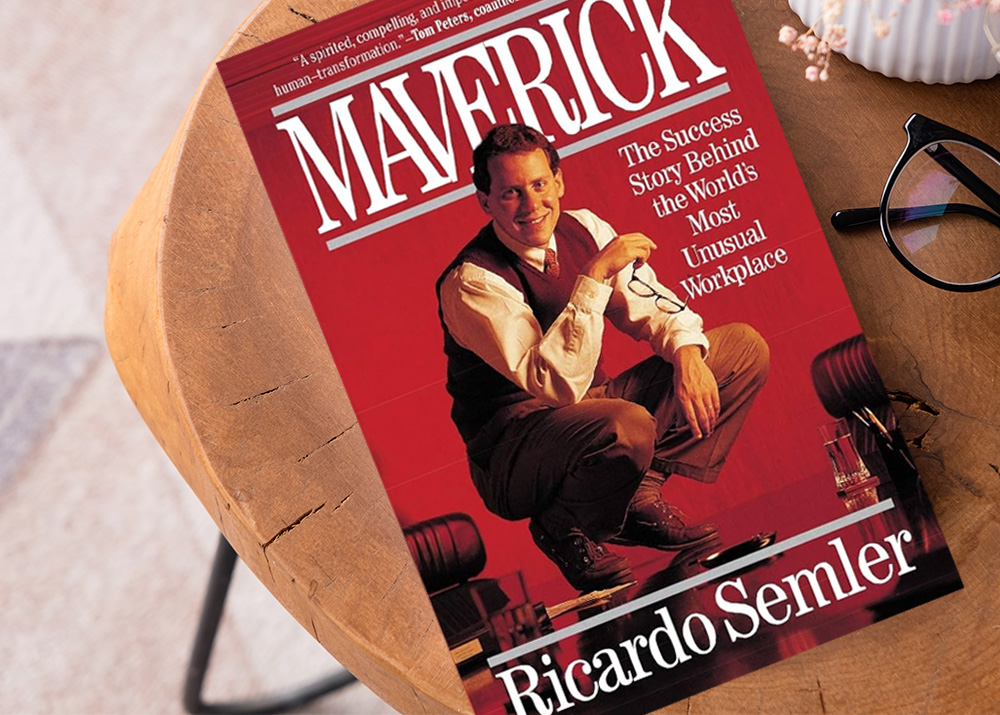Maverick by Ricardo Semler: A Review

Executive Summary
Our last book review,” Moments of Truth” " came from the late 1990s. Just to reinforce the point that great lessons are timeless, here is a ripping business story. Maverick: The Success Story Behind the World's Most Unusual Workplace" by Riccardo Semler, often simply referred to as "Semler," is a compelling account of radical corporate reinvention. Semler, who reluctantly became CEO of his family’s business Semco, at the age of 21, transformed it from a traditional manufacturing company into one of the most innovative and democratic workplaces globally. At that point in his life, Semler had dropped out of business school and was playing guitar in a band, The book details Semler's revolutionary approach to management, which emphasizes employee autonomy, participative decision-making, and a flat organizational structure. Through a mix of personal anecdotes and business strategies, Semler challenges conventional business wisdom, advocating for a workplace where employees have significant control over their work environment and responsibilities.
Key Points
The book is filled with great, often amusing anecdotes and examples of how Semler at such a young age challenged the status quo and conventional business practices. While there are simply too many to include in a review (you should read the book!), some key takeaways for me include:
1. Decentralized Decision-Making
One of the most striking examples from the book is Semler's decision to decentralize decision-making. Instead of having a top-down management style, he allowed employees at all levels to make decisions that impacted their work. This was vividly demonstrated when he encouraged factory workers to form small, self-managed teams that had the autonomy to set their own production goals and schedules. This approach not only increased productivity but also significantly boosted employee morale and engagement. While this approach is espoused by many businesses today, few really embrace them in a way that Semler so successfully did. It takes courage, self-belief and strong leadership
2. Open Financial Information
Semler introduced a policy of open financial information, where all employees had access to the company's financial data; this would be inconceivable for most businesses today. This transparency fostered a sense of ownership among the staff, as they could see how their work directly influenced the company's performance. A notable instance was when Semco faced a financial crisis, and instead of imposing layoffs, Semler shared the situation with the employees. The workforce collectively decided on salary cuts and other cost-saving measures, demonstrating their commitment to the company's survival and success. A good example of what Peter Druker described as “culture beating strategy hands down.”
3. Flexible Working Conditions
Riccardo Semler was a pioneer in promoting flexible working conditions long before it became a trend. He eliminated formal working hours, allowing employees to choose when and where they worked. A memorable example is when he introduced a resultsonly work environment (ROWE) where employees were judged solely on their output rather than the number of hours they spent in the office. This policy led to increased creativity and productivity, as employees could work during their most productive times. In an environment where there had been crippling internal theft (“shrinkage”), Semler abandoned the draconian security system that had been put in place to combat this, and, on a clear directive that theft if found had dire consequences, dramatically reduced the amount of stolen property from the business. Headline here: trust and
leadership.
Major Learnings for Leaders
1. Empowerment Through Trust
Leaders can learn the importance of trusting their employees. By giving employees autonomy and decision-making power, leaders will foster a more engaged and motivated workforce. Semler’s example shows that when employees feel trusted, they
are more likely to take ownership of their work and contribute to the company’s success.
2. Transparency and Open Communication
Transparency in financial and operational matters can build a stronger, more committed team. Leaders should consider sharing pertinent company information with their employees to create a culture of trust and accountability. This practice can help employees understand the bigger picture and see how their efforts contribute to the company’s goals.
3. Adaptability and Flexibility
Flexibility in the workplace can lead to greater productivity and job satisfaction. Leaders should recognize the value of allowing employees to work in ways that suit their personal schedules and strengths. Emphasizing outcomes over hours worked can create a more dynamic and effective work environment.
Summary and Leadership Course Takeaways
There is just so much in this extraordinary book that business leaders can learn today. "Maverick" is a transformative read for any leader looking to innovate and improve their management style. The key takeaways from the book, such as empowering employees through trust, fostering transparency, and promoting flexibility, are critical components of modern leadership. These lessons align well with the leadership courses we offer, which emphasize adaptive leadership, strategic thinking, and building resilient teams. The courses can help leaders implement these practices by
providing frameworks and strategies for creating a more democratic and effective workplace. By embracing Semler's principles, leaders can inspire their teams, drive innovation, and achieve sustainable success.
